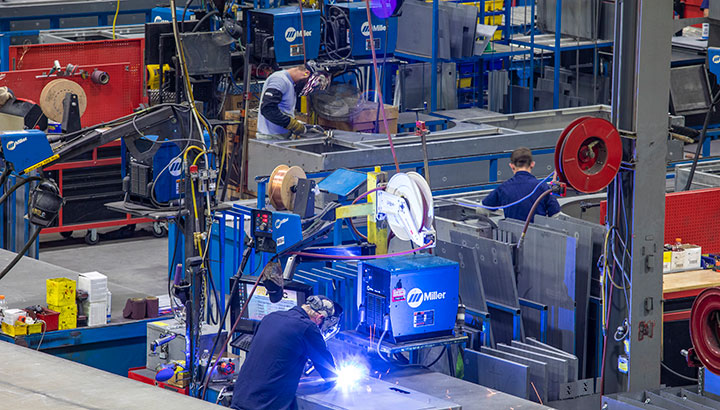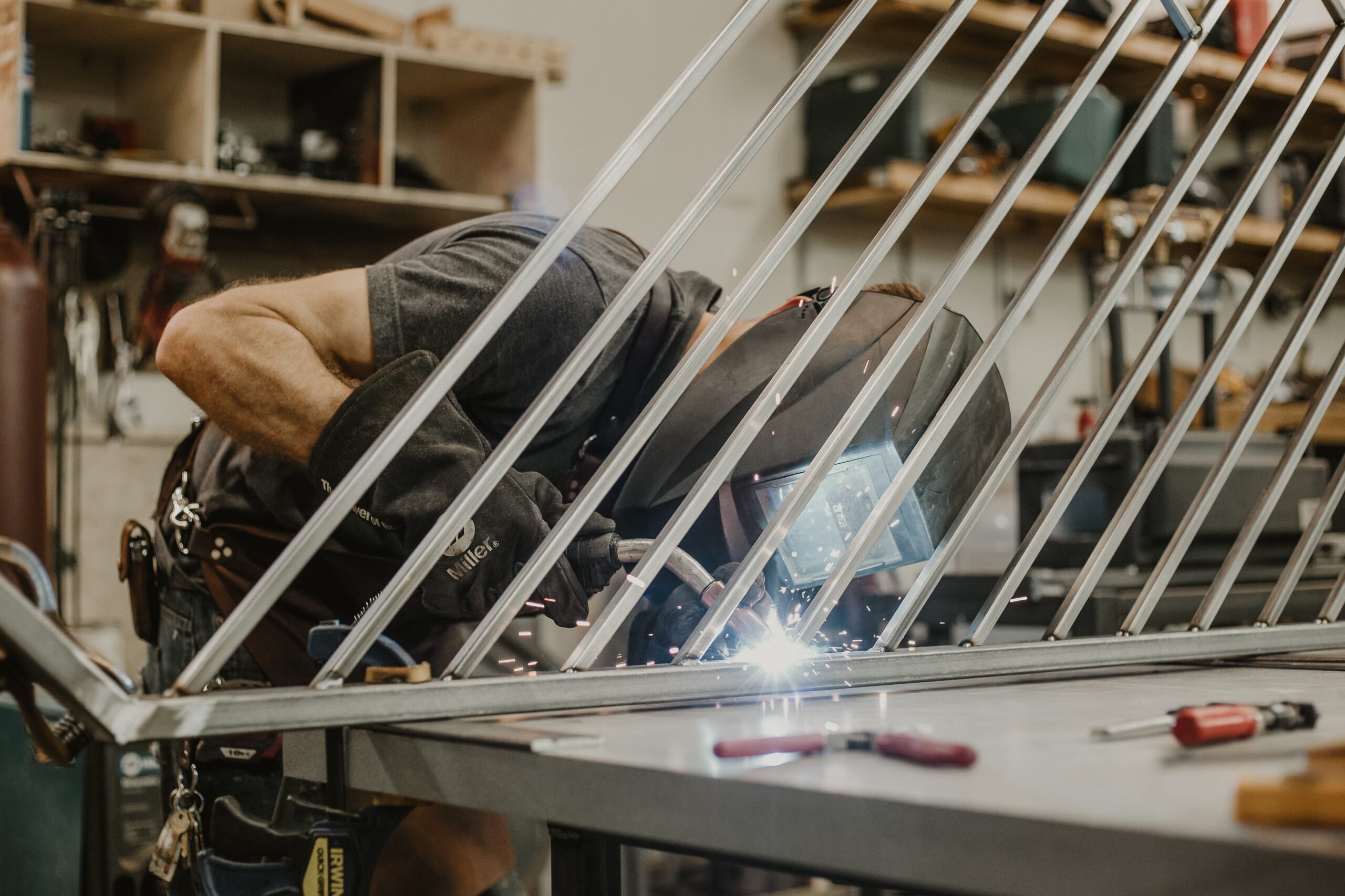Expert-backed steps to deal with warping in Montana Mobile Welding and Repair Belgrade
Typical Welding Fixing Issues and Just How to Address Them Effectively
Welding repairs commonly experience a series of issues that can endanger the stability of the last product. Common issues consist of inadequate penetration, porosity, and misalignment, amongst others. Each flaw presents special difficulties that require specific techniques for resolution. Comprehending these problems is crucial for welders aiming to boost their results and skills. This discussion will explore these typical welding fixing problems and efficient approaches to resolve them.
Inadequate Penetration
Poor penetration occurs when the weld steel stops working to fully fuse with the base material, resulting in weak joints and prospective structural failings. This problem frequently comes from not enough heat input, wrong electrode angle, or inappropriate welding rate. Welders may run into insufficient penetration as a result of a miscalculation of the necessary criteria for a specific product thickness or type. In addition, contamination on the base material's surface can hinder reliable bonding, worsening the issue. To deal with inadequate penetration, welders ought to ensure appropriate setups on their tools and preserve a tidy job surface. Routine evaluation of welds is advised to recognize any type of shortages early, permitting prompt modifications and the avoidance of endangered structural integrity in welded settings up.
Porosity
Porosity is an usual defect in welded joints that materializes as little gas bubbles entraped within the weld metal. This defect can endanger the integrity of the weld, resulting in minimized strength and possible failure under stress and anxiety. Montana Mobile Welding and Repair Welding. Porosity typically develops from contamination, dampness, or incorrect welding techniques, which enable gases to run away into the liquified weld swimming pool. To address porosity, welders must assure correct surface area preparation, maintain a clean workplace, and make use of appropriate welding specifications. Furthermore, choosing the right filler product and shielding gas can minimize gas entrapment. Routine examination and testing of welds can aid identify porosity early, ensuring timely restorative activities are taken, consequently preserving the high quality and reliability of the welded framework
Misalignment
Imbalance in welding can emerge from numerous variables, consisting of inappropriate arrangement and thermal development. Understanding the root creates is vital for effective resolution. Numerous modification strategies are readily available to realign parts and ensure architectural stability.
Root causes of Imbalance
Welding imbalance typically originates from a range of underlying problems that can jeopardize architectural honesty. One key cause is incorrect fit-up of components before welding, which can cause voids and uneven surface areas. Variations in thermal expansion throughout the welding process can also result in distortion, especially if the materials being joined have various coefficients of growth. In addition, poor fixturing and clamping may fall short to hold components firmly in location, bring about motion during welding. Badly kept devices, consisting of welding equipments and tools, might introduce variances in the weld grain, more adding to misalignment. Finally, operator mistake, coming from inadequate training or experience, can likewise play a significant function in developing misaligned welds.
Improvement Strategies Available
Attending to imbalance properly requires a combination of restorative methods customized to the certain concerns handy. One common technique is the usage of jigs or fixtures to hold elements in the right placement throughout welding, making sure consistent alignment. Additionally, pre-heating the products can help in reducing distortion and improve fit-up. For significant misalignment, mechanical adjustment techniques, such as making use of hydraulic jacks or clamps, can be utilized to remedy the setting before welding. Post-weld heat therapy may likewise be needed to relieve anxieties triggered by imbalance. Cautious examination and adjustment throughout the arrangement stage can avoid imbalance problems from becoming substantial problems, promoting a smoother welding procedure and improving overall architectural stability.
Distortion
Distortion is a common challenge in welding that can develop from numerous elements, consisting of irregular cooling and heating. Comprehending the causes of distortion is crucial for executing reliable prevention methods. Resolving this problem not just boosts structural integrity yet likewise boosts the general quality of the weld.
Reasons for Distortion
When based on the extreme heat of welding, materials frequently undertake modifications that can lead to distortion. This sensation mainly arises from thermal expansion and tightening throughout the welding process. As the weld area heats up, the material increases; upon cooling, it acquires, which can create internal tensions. On top of that, irregular heating throughout a work surface can worsen these stresses, leading to bending or flexing. The kind of product likewise plays a significant role; metals with varying thermal conductivity and coefficients of expansion might react in a different way, leading to unforeseeable distortions. Bad joint layout and insufficient fixturing can add to imbalance during welding, increasing the chance of distortion. Recognizing these causes is vital for reliable welding repair service and prevention methods.
Prevention Techniques
Reliable avoidance techniques for distortion throughout welding focus on regulating warm input Learn More Here and making sure correct joint design. Maintaining a constant heat input helps to reduce thermal expansion and tightening, which can result in distortion. Using strategies such as preheating the work surface can additionally decrease the temperature level gradient, promoting uniform heating. Furthermore, choosing appropriate joint layouts, such as T-joints or lap joints, can enhance security and decrease stress concentrations. Executing correct fixturing to protect the work surfaces in position better aids in preserving alignment throughout the welding process. Ultimately, staggered welding series can disperse warmth more uniformly, protecting against local distortion. By applying these methods, welders can greatly reduce the likelihood of distortion and boost the general quality of their welds.
Breaking
Fracturing is an usual concern experienced in welding fixings, commonly arising from different factors such as inappropriate air conditioning prices, product option, or insufficient joint prep work. The event of fractures can considerably endanger the integrity of the weld, resulting in possible failings during procedure. To resolve this problem, welders have to initially examine the source, making certain that products work and appropriately selected for the specific application. In addition, controlling the air conditioning price throughout the welding procedure is important; fast air conditioning can generate anxiety and bring about cracking. Correct joint style and preparation likewise contribute to decreasing the threat. Executing these strategies can improve weld top quality and toughness, inevitably minimizing the possibility of breaking in completed weldments.

Insufficient Blend
A substantial problem in welding fixings is insufficient blend, which happens when the weld steel does not properly bond with the base product or previous weld passes - Belgrade Fabrication. This issue can bring about weaknesses in the joint, potentially jeopardizing the find out this here integrity of the welded structure. Aspects adding to insufficient blend include not enough heat input, inappropriate welding strategy, and contamination of the surface areas being signed up with. To address this problem properly, welders ought to ensure appropriate pre-weld cleansing and surface preparation, as well as readjust their welding specifications to achieve adequate infiltration and blend. Regular evaluation throughout the welding process can additionally aid identify incomplete fusion early, permitting prompt corrective actions to boost the total high quality of the weld
Overheating
While welding repairs can improve architectural honesty, overheating provides a considerable challenge that can result in material deterioration. Excessive warmth throughout welding can alter the mechanical residential properties of steels, causing decreased stamina, increased brittleness, and bending. This phenomenon is especially critical in high-stress applications where structural dependability is paramount. Determining getting too hot can include aesthetic examinations for staining or distortion, along with monitoring temperature throughout the welding process. To alleviate the threats connected with getting too hot, welders should utilize suitable techniques, such as controlling warm input, adjusting traveling speed, and making use of appropriate filler materials. In addition, applying pre- and post-weld warmth therapies can assist restore product residential properties and improve the total top quality of the repair, guaranteeing lasting performance and safety.
Often Asked Questions
What Are the Usual Indicators of a Welding Flaw?

How Can I Test My Welds for High quality?
To test welds for high quality, one can utilize visual assessments, ultrasonic screening, and radiographic approaches. Each strategy guarantees architectural integrity, recognizes flaws, and verifies adherence to defined requirements, inevitably improving the dependability of the welded joints.
What Safety and security Precautions Should I Take While Welding?
When welding, one must prioritize security by putting on proper personal safety devices, making certain appropriate ventilation, securing flammable products away, maintaining a tidy workspace, and being mindful of surroundings to avoid injuries and accidents.
Can I Fix a Weld Without Remodeling the Entire Joint?
Fixing a weld without redesigning the entire joint is feasible, depending upon the damage (Belgrade). Methods such as grinding, including filler material, or utilizing a welding procedure can efficiently deal with particular defects while preserving the surrounding structure
What Equipment Are Necessary for Efficient Welding Fixes?
Crucial tools for efficient welding repair services consist of a welding maker, cable brush, grinder, safety gear, clamps, and filler products. Each tool plays an essential role in making certain top quality and safety and security during the repair work procedure. Porosity typically arises from contamination, dampness, or inappropriate welding strategies, which allow gases to news run away into the molten weld pool. Improperly maintained devices, consisting of welding equipments and tools, may introduce disparities in the weld bead, additional adding to misalignment. When subjected to the intense heat of welding, materials commonly undertake adjustments that can lead to distortion. Fracturing is a common issue encountered in welding repair services, usually resulting from various variables such as incorrect air conditioning rates, material option, or inadequate joint prep work. A considerable issue in welding repair services is insufficient fusion, which occurs when the weld steel does not properly bond with the base product or previous weld passes.